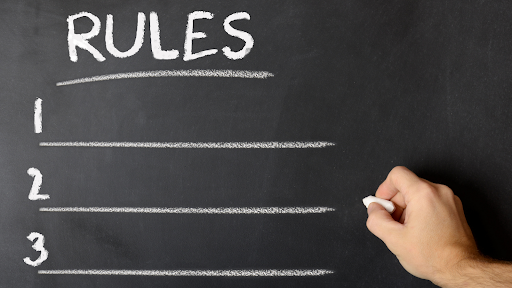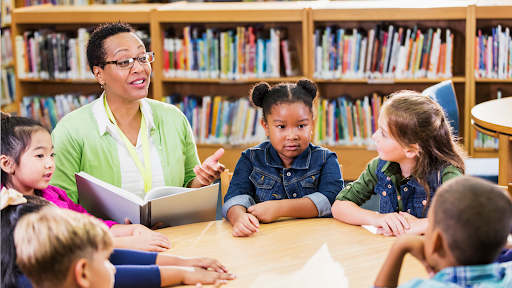As you finalize lesson plans post winter break, you might be tempted to steam ahead with a new unit or instructional activity on a key standard. After all, you are likely nearing the halfway mark of the school year, and there is still a lot for students to learn! Before you finalize those plans, consider pivoting.
“Why?” you might ask. Let’s be honest here for a moment. It is not easy returning from break. It is not easy for you, not easy for families, and not easy for your students. We all need to relearn early morning wake-ups, once again adjust to a rigid structure, and grow accustomed to cohabitating a small room with 20+ other humans. So, before chaos breaks out or you pull out your hair, consider four tips that have helped me survive (and some years even thrive) the weeks after returning from a lengthy break.
Check in with your Students

This first tip is extremely simple, but perhaps most important. Check in. Spend time taking a temperature check on the room. How are your students feeling? For many of your students, their break may have been stressful or upsetting. Their home environment may have been unstable, leading to sleepless nights, uncertainty, and stress. Returning to school might be a breath of fresh air, or it might be the last thing they want on their minds.
Create space for students to talk or write about how they are feeling. Some simple prompts I like to ask include, “What color are you feeling today? Why?”, “Describe your winter break in one word. Why did you choose that one word?”, and “What do you wish your teachers knew about your break? Why?”
You might leave this prompt on students’ desks as part of morning work or engage your entire class in a restorative circle at the start of your instructional period. No matter how you do it, make sure you know your students’ needs before expecting them to learn something new from you. Use this new information to adjust your interactions and expectations. Then, show lots of grace!
Revisit Classroom Promises and Expectations

It may be January, but do not be afraid to go back to the beginning. Pull out those class contracts and classroom expectations you set in August, and remind students of what they promised. In my classroom, I always have students sign a contract of expectations that they wish the entire class would keep. Reflecting on students’ recent commitment to the promises or expectations can be a powerful activity. I love interweaving this with New Year’s resolutions and encouraging my students to set academic, behavioral, and personal goals for themselves. For older students, I find it helpful to utilize Google Forms to survey students and engage in self-reflection.
When I work with younger students, I have them create artwork depicting their goals. You can display their goals on a classroom bulletin board or post it on their desks. Regardless of how you conduct reflection and goal-setting, make sure students are given the opportunity to share what they perceive to be their strengths and areas for growth.
Remind students that they have a voice. Students might even decide that the class needs to modify or add to their class contract in order to help everyone thrive. Be sure to post visual reminders throughout the room to help students be successful in meeting the New Year’s goals.
Don’t be afraid to go back to the very basics. Have the transitions in the hall or out of the classroom become less than optimal? I have been there! Select one problematic transition and commit to spending the next 2 weeks to improve it.
Before practicing as a whole class, ask a few students to model what the transition should look like. As the transition is being modeled, ask the rest of the class to observe and share what they notice. Provide lots of verbal praise for what students do correctly. Then, give the whole class the opportunity to practice the routine. Provide incentives to reward students’ positive behavior.
Teach Social Skills through Read-Alouds

Similar to the beginning of the school year, the week or two after winter break is an optimal time to teach social and emotional skills. Read-alouds are a powerful way to bring up relevant social issues and help students navigate life’s challenges. Below are a few of my favorites to pull out any time of the year!
- My Mouth is a Volcano by Julia Cook- Through this fun and humorous book, students learn how interrupting affects others, and gain strategies to control their thoughts and words.
- Each Kindness by Jacqueline Woodson- Author Jacqueline Woodson teaches readers the power of one’s actions and the importance of showing kindness.
- Just Ask! Be Different, Be Brave, Be You by Sonia Sotomayor- This book teaches students the value of embracing diversity and celebrating one’s identity.
Do not be afraid to spend extra time the first week or two after winter break during your literacy block doing read-alouds. The time you spend will allow you to model fluency and comprehension skills as well as give you the tools to frame important class discussions.
Make It Fun!

Engagement is crucial at this point in the year. Teachers must step up their game and make learning relevant to help students make connections and build positive classroom cultures. Consider utilizing one of the below strategies in the first week of school.
Gamify Learning
o Kahoot– This tool is a classic, but a goodie! Don’t shy away from turning review activities or exit tickets into fast-paced and exciting opportunities to engage your learners. Kahoot will allow you to assess a single standard, gauge academic progress, and help students set goals.
o Nearpod– Nearpod allows you to create or embed PowerPoints and Google Slides to make otherwise teacher-centered presentations into interactive activities. Create games, polls, quizzes, and videos all within the tool.
Integrate STEM!
Many students in your classroom are kinesthetic learners. In other words, they learn best by moving, touching, feeling, and interacting! A STEM-based learning approach allows teachers to ensure that learning is authentic and relevant. Ramussen University has developed 11 STEM activities that will help you get started planning. Google has also developed a free computer science curriculum, CS First, for students ages 9-14. My fourth graders love it!
Collaborative Learning Routines
Students learn when they are able to collaborate with others, move, and talk about what they learning. Dr. Spencer Kagan has developed numerous cooperative learning structures that will help you get kids talking, make learning student-centered, and keep students moving in your classroom. While some of the texts and materials involve a purchase free, his site has links to dozens of articles with practical tips and instructional ideas.
Student Choice Boards
Even your most reluctant learners can be motivated when they have a voice about what they learn and how they learn. Small group and centers are an ideal time to utilize student choice boards, whether you are reviewing previous concepts or practicing new vocabulary. My colleague David Kayler shared how he uses these in his classroom in the article Motivating Students During Distance Learning.
Breathe. You’ve got this.

The first few weeks back from break are exhausting, but pivotal in setting the tone for the rest of the year. Give yourself and others grace as you seek to evaluate the needs of students, revisit classroom routines and expectations, teach social and emotional skills, and engage learners in meaningful ways. Do not be afraid to spend extra time honing your classroom culture; the time you put in now will pay off the rest of the year. The best is yet to come.





1 reply on “Hit the Ground Running: Four Tips to Help your Students Thrive after Returning from Holiday Break”
Very helpful article!